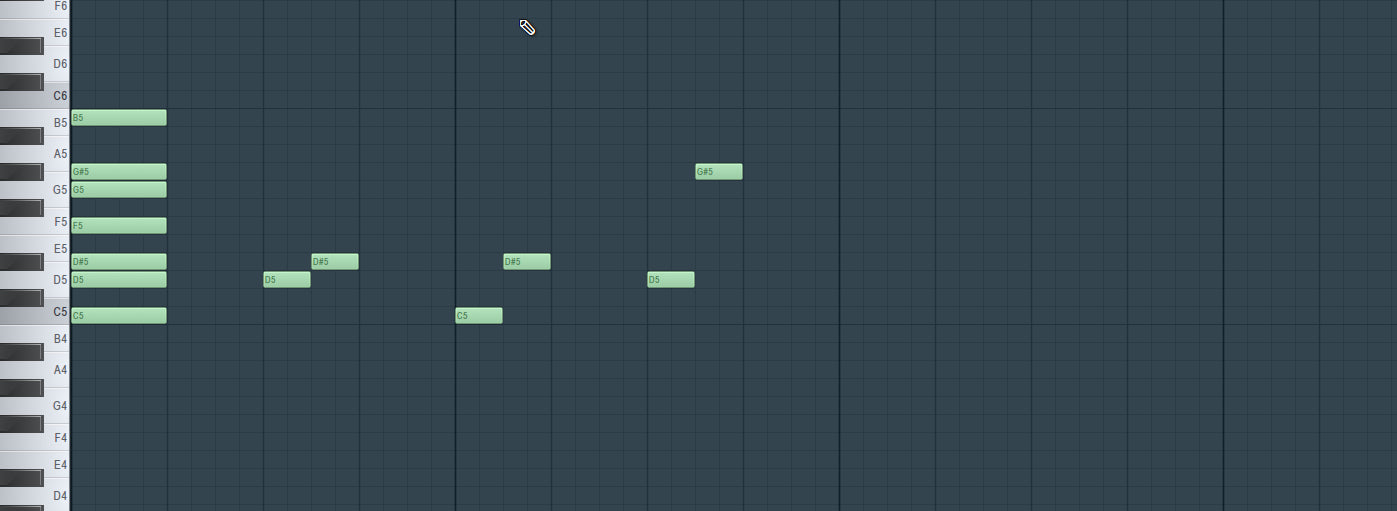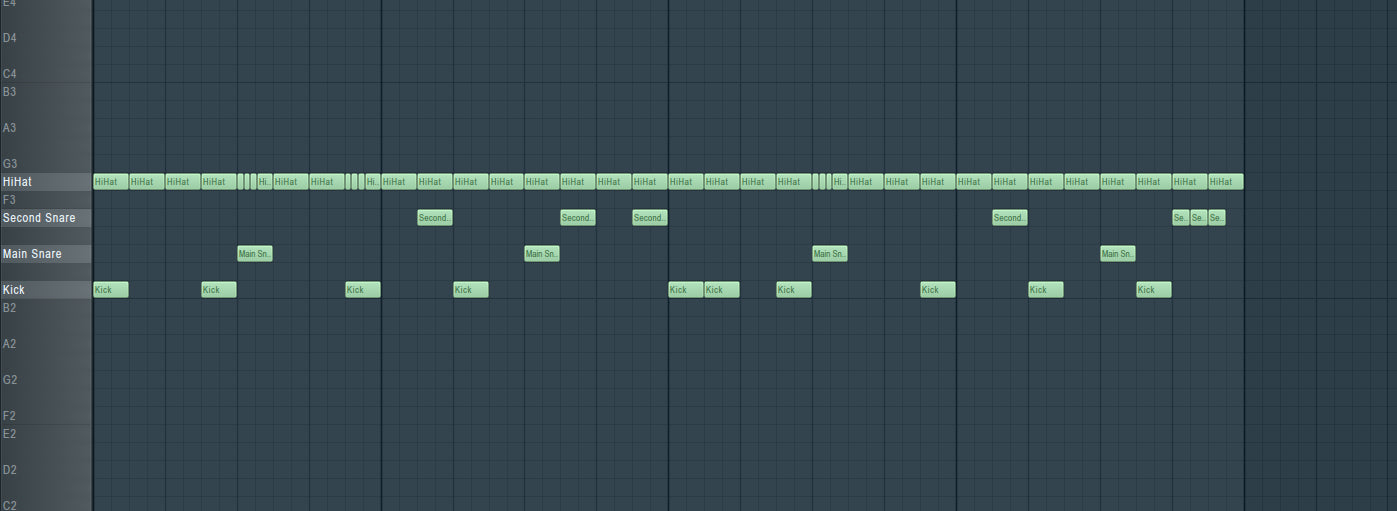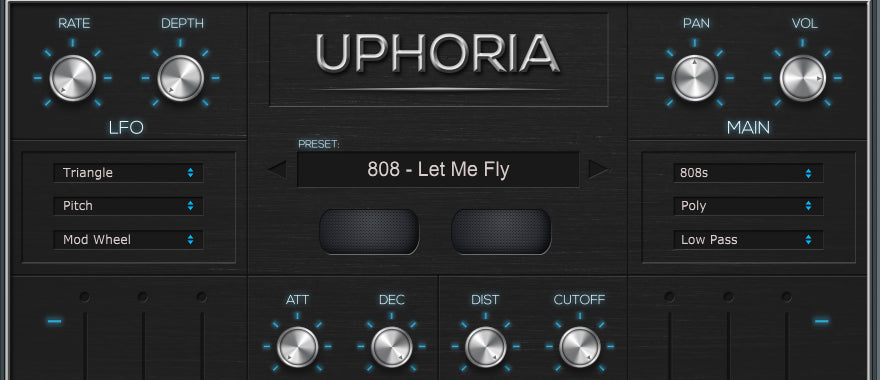How To Create Trap Melodies

Trap music and the beat makers behind them need no introduction. Not only is it the most popular rap subgenre of our time, but its trademark hi-hat rolls and booming 808 bass have also found their way into modern EDM and pop music. Trap — a term that initially was a reference to a lifestyle full of criminal activity involving drug dealings and gun violence, is now associated with the world's most famous music artists who dominate the billboard charts. One of the reasons for this astonishing rise is the fact that making trap music is pretty accessible to beginner producers. Rap vocals are almost always the centerpiece of a trap beat, so there's rarely a need for intricate sound design or crazy build-ups, which makes it easy for people to get into the genre. In this article, we will cover some of the fundamental topics of trap production and provide tips that will set you on the path of making your own trap beat in no time. Let's get started.
What Makes a Good Trap Beat?
The answer to this question is not unequivocal because different people like trap music for different reasons. If you are writing instrumentals for rap artists, ask them what it is that they look for in a trap beat the most. Depending on their taste, you will get a wide range of different answers. Some will put the emphasis on the atmosphere of the track because it sets the mood for their lyrics. Others will insist on having a memorable melody that carries the track. And still others will tell you it is all about the kick that hits hard, the hi-hats and snare rolls and the bass that slaps.
Still, a good trap beat is usually atmospheric, aggressive and menacing in nature. You will need the right musical scale to give these characteristics to your sound. A scale is a collection of notes that sound well together, so in a way, it is your insurance against writing music that sounds out of tune. By sticking to the right scale, you can compose a solid sounding chord progression and melody that fits the genre, even if you don't know music theory. The three most common scales for trap music are the natural minor scale, the harmonic minor scale, and the Phrygian scale. You don't need to remember these scales because we have the Stamp tool inside FL Studio that provides a shortcut to any scale imaginable. Clicking on it will get you a long list of different chords and scale names, among which the scales we are looking for can be found as well.
Working in these scales will already help you in writing a fitting trap melody, but it doesn't hurt to understand what makes a melody sound a certain way. As already mentioned, trap melodies tend to sound aggressive, menacing and ominous (unless it is a party beat). In music, there are special melodic intervals that composers and producers use to evoke certain feelings. For a trap melody, we need to use intervals that create tension and uneasiness. This can be achieved through the use of minor 2nd, minor 3rd, and tritone intervals. If we build the minor harmonic scale in the key of C inside FL Studio's piano roll, then all of the minor 2nd intervals would be the distance between D to D#, G to G#, and B to C. Simply put, if you write a melody and some notes are separated by a semitone then you have minor 2nd intervals in your melody. If the notes are separated by three semitones, like C and D#, or six semitones, like D and G#, then you are dealing with minor 3rd or tritone intervals respectively. Although you could compose a suitable trap melody by ear, knowing the intervals will help you create the desired feeling faster.

What is a Trap Beat Tempo?
A trap beat tempo, also known as BPM (beats per minute), is how fast a song or beat is played. If you check out your favorite trap beat, you will see that most of them fall in the range between 120 and 160 BPM. A metronome set in this range will tick quite fast, and most of the EDM genres fall into this range as well. If you listen to a techno song at 140 BPM, it will sound a lot more energetic than your typical trap beat of the same BPM. This disparity in how fast a track feels can be quite confusing if you are not familiar with the terms double-time and half-time.
Double-time and half-time are two words that are often thrown around by producers who talk about the tempo of their beats. To the uninitiated, it will sometimes seem like both these terms refer to the same thing even though double and half are two adjectives that mean the complete opposite of each other. The truth is, it is all about the perspective. Most trap rappers do not rap at a BPM higher than 100, and if they do, they are referred to as double-time rappers. Your typical trap artist will feel comfortable performing in the 60 to 80 BPM range. This means that if you meet an artist who requests a beat in 140 BPM, you should know that the artist will most likely rap at 70 BPM. In other words, his actual vocal performance will be in half-time. If, on the other hand, you're dealing with an artist who is a bit more knowledgeable about tempo, and he tells you that his flow sounds best at 70 BPM, you will know that you will have to work in double-time of 140 BPM inside your DAW.
You might still wonder why it is preferred to set the BPM to double-time when writing trap beats. Why not simplify things and write the beat in the tempo that the vocal will be performed at? The reason why most producers opt-in for the higher BPM is because it makes it easier to program the hi-hat and snare rolls. Setting the BPM inside the DAW to 140 but treating each bar as if it was only half a bar will have the effect of zooming in into the piano roll grid and allow you to make those fast hi-hat rolls without the need of using extra note splitting tools. It is a lot easier on the eye, and it speeds up the workflow when you have to look at and work with "normal" size notes rather than notes that are tiny and hard to select with your mouse.
What Instruments are Used in Trap Music?
Although each trap beat is unique, many instruments are common to the genre. Let's cover those instruments in more detail.
Building a Drum Foundation
It goes without saying that every trap beat needs drums. Before going into details of drum programming, it is important to understand that you need to lay down a drum foundation. Having the foundation or the bare bones of the percussive rhythm will give you a clear framework within which you can be as creative as you like without the risk of accidentally deviating into the experimental territory.
The three elements of the foundation are the kick, the main snare, and the hi-hats. Assuming that you have set the BPM to double-time (e.g. 135 BPM), you will have to treat every bar inside your DAW as if it is only one half of a bar. In other words, the true bar length will have eight segments, also known as beats, instead of the regular four. From now on, when talking about bars in the context of drum programming, we will be referring to the true bar length and not the bar length that FL Studio is showing us per default. Having said that, in our foundation the kick should always be placed at the start of the first beat of every bar. Next, we place the snare on the third and the seventh beat. Finally, we fill in the hi-hats so that there is one hi-hat every two steps. Check out the screenshot below and copy the layout into your DAW if these instructions sound too abstract.
Now that we established what a trap drum foundation looks like, it is time to get creative and program some of those iconic hi-hat and snare rolls. In general, your goal is to fill in the spaces that you have at your disposal within the loop to make the drums sound more interesting. Right now, the hi-hats have two steps between them. To create interesting hi-hat rolls, click on the Snap to grid tool and select none . This will make the piano roll grid more granular. Now, pick a spot where you want to add a hi-hat roll and start filling out those squares, experimenting with different patterns along the way. Here's an example of a hi-hat pattern if you need some inspiration.
Once you've added a couple of hi-hat rolls, you can start enhancing the rhythm of the drum loop even further by trying out the kick in different places within the loop. Another great way to add more bounce to the drums is to use a second snare. Usually, this snare will sound shorter and snappier than the main snare. Its primary function is to interact with the kick and provide the overall groove with even more flavor. Also, the second snare is often responsible for the triplet rolls that are so common in trap beats. If you want to program your own snare rolls, it is best to choose the 1/3 step option in the Snap to grid tool. Adding the snare somewhere at the end of the drum loop will make for a good drum fill that can act as a short transition between sections. Here's an example of how your drums could look once you've followed all of the steps above.

Where to Find the 808 Bass
The trap sound is closely interlinked with the 808 bass. Sometimes hard-hitting drums and an 808 sub that makes you weep can be all you need to make a good trap beat. The name 808 originally referred to the Roland TR-808 drum machine that came out in 1980. Although the drum machine had many different sounds like claps and cymbals, over the years, the moniker "808" became a common description for the trap sub-bass.
Roland TR-808's main distinction at the time was that all of its sounds were synthesized and didn't come from samples. Nowadays, you don't need the original drum machine to get your hands on some 808s. You could use any modern VST synth and recreate the sound with ease, because in its essence an 808 bass is a simple sine wave that is heavily processed with compression and distortion. If you are a beginner and you don't want to bother with sound synthesis, the fastest way to cop some 808s is to download a trap sample pack or use a VST rompler like Uphoria by AngelicVibes that has a multitude of sampled 808s and other trap-related instruments. Whatever path you choose, make sure that the kick and the 808 blend well together. The kick should be hard, short and punchy, whereas the 808 should be longer, occupying the sub frequencies between 40 and 80 Hz. By combining these two bass elements, you should be able to achieve a powerful low-end for your beat.

Best plugins for trap melodies
When it comes to choosing instruments for trap chord progressions and melodies, you have a lot of choices. Most trap producers don't focus too much on the sound design and prefer using so-called romplers. A rompler is a VST plugin that has a large database of sampled sounds. The most popular romplers for trap music are Omnisphere 2 by Spectrasonics, ReFX Nexus, and ElectraX by Tone2. Using even one of these romplers should be enough to find any sound you need, from pianos and organs to bell sounds and flutes. You'll be surprised how many trap beats that made it into the billboard charts were produced with these plugins, so don't hesitate to use them as well. What works for the pros will work for you too.

How many bars is a trap beat?
Every trap beat needs an intro, at least a couple of verses and choruses, as well as an outro. The standard lengths for a rap verse and chorus are 16 bars and 8 bars respectively, whereas the intros and outros can range anywhere from 4 to 8 bars. If you are working in double-time BPM, then every bar of the vocal performance will require two bars of the instrumental. For that reason, inside your DAW, a verse section will be 32 bars long, and the chorus section will last 16 bars.
It is up to you how to arrange the beat, and different artists will have varying requests in regards to the beat structure. The best way to get better at arranging trap beats is to grab an MP3 of your favorite trap beat and deconstruct the arrangement inside your DAW. Learning how professional producers arrange their tracks will help you tremendously down the road and even prevent writer's block because you will have a general idea of how many sections you need to finish. Here's an example of a trap beat in 162 BPM that has 16 bars of intro, two verses of 32 bars, three choruses that range between 16 and 8 bars, and an outro with a fade-out that lasts for around 12 bars.

Conclusion
Although there is no cookie-cutter formula for how to produce a trap beat, there are still many common elements that are shared by beats of this genre. Hopefully this article has given you some new ideas and tools to start working on one of your own productions.
How To Create Trap Melodies
Source: https://samplified.us/blogs/news/how-to-make-a-trap-beat
Posted by: ozunaweland.blogspot.com

0 Response to "How To Create Trap Melodies"
Post a Comment